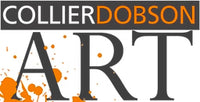The popular Christian festival and cultural holiday is joyously anticipated each Springtime, enjoyed for its message of hope and renewal and is celebrated in a wealth of ways, some of which may seem unconnected to its religious beginnings.
There are, however, apt reasons for the present-day sharing of chocolate eggs, the creating and exchanging of pictures of chicks, bunnies and ducklings, and the 'moveable' nature of the dates on which we celebrate it, with some saying that it is “likely that many of our Easter traditions involving eggs and hares or rabbits have their origins in pre-Christian beliefs around the cycles of nature and fertility.” - Sally-Anne Huxtable, Head Curator, National Trust.
Each year, on or after 21st March on the first Sunday following the full moon, we celebrate Easter Sunday. This computation was arrived at over many centuries, and with a few controversies along the way after The First Council of Nicea (a council of Christian bishops who congregated in 325 AD) laid down two explicit rules for Easter: independence of the Jewish calendar, and worldwide uniformity. Later, in 725 AD, English monk Saint Bede wrote "The Sunday following the full Moon which falls on or after the equinox will give the lawful Easter.”.
In most years, Easter will be acknowledged earlier in the West than in the East, due to many Eastern churches calculating the date using the Julian calendar or Revised Julian calendar, and Western churches and civil authorities using the Gregorian calendar. For us in the UK it falls on April 17th in 2022, preceded by Good Friday on 15th, and with Holy Week beginning on 10th.
Holy Week is usually the last week of Lent, and begins on the previous Sunday, known as Palm Sunday, marking Jesus' arrival in Jerusalem. During this week, Maundy Thursday recalls the Last Supper, when Jesus broke bread and drank wine with his disciples at the Passover meal; and Good Friday is a day of mourning, remembering his death by crucifixion. The week culminates on
Easter Sunday, commemorating the resurrection of Christ from the tomb, after God raised Jesus from the dead.
The giving and eating of eggs during the celebration ties in with the themes of resurrection and rebirth, symbolising both Jesus' empty tomb from which he was resurrected, and fertility and new life. It is said to trace back to Mesopotamia as early as the 1st century AD, spreading through the Orthodox churches to eastern Europe and Siberia, then later through the Catholic and Protestant churches to the rest of Europe.
Originally, vegetable dyes would have been used to decorate chicken eggs in bright colours (red was often used to symbolise the blood of Christ, or green to symbolise new growth after winter) which were displayed or gifted to one another. The eggs would then be eaten on Easter Sunday, as the day also marks the end of the fasting period of Lent.
Interestingly, it has also been suggested that the popular custom originated in Ukraine, where the art of decorating eggs, known as Pysanka, pre-dates Christianity. The ancient Ukrainian tradition saw the beautifully ornate eggs featured in Spring festivals, symbolising nature's rebirth.
The ancient Slavic tradition is still practised to this day, ornately decorating eggs or egg-shaped tokens using a batik (wax resist) technique to 'write' traditional folk motifs and designs with a pinhead or special tool. So popular is the custom that many contemporary adaptations can be found, like the Art Club Blog's fantastically vibrant Roy Lichtenstein and Andy Warhol inspired Pop
Art style designs.*
Nowadays, most eggs given during the celebration are made from the favourite festive treat, chocolate, and are wrapped in colourful foil and other vibrant packaging.
The delivery of the festal offerings is often presented as being at the hands of the Easter Bunny, a folkloric rabbit or hare, most likely of German origin, who would judge the behaviour of children and decide whether they were deserving before distributing the gifts. It is posited that the use of the hare is due to its association with fertility, and lunar cycles – the date of the Christian holiday being determined in part by the phase of the moon.
Although there is some uncertainty surrounding it, it is often proclaimed that the hare is one of the symbols of the Germanic goddess Eostre or Ostara, who was traditionally observed during April fertility festivals and commemorations of renewal and rebirth. An 1889 issue of American Notes and Queries says “The children are told that this Osh’ter has laid the Easter eggs [...] The hare was originally a bird, and was changed into a quadruped by the goddess Ostara; in gratitude to Ostara or Eastre, the hare exercises its original bird function to lay eggs for the goddess on her festal day.”

Depictions of fluffy yellow chicks and cute ducklings are commonplace during this time of observation, with the connotations of new life and fertility being abundant in the tender infant creatures.
From the early Slavic traditions of decorating eggs and 1st century AD Christian iconography of the phoenix egg; to the Germanic depictions of Oschter-Haws (Easter Hare) by artists including German born Johann Conrad Gilbert (1734-1812), to Leonardo da Vinci's famous depiction of The Last Supper and Renaissance painter Tiziano Vecelli's (or Titian) Christ Carrying the Cross, the practice of celebrating and representing the story and symbols of Easter through art has endured for many centuries and is sure to continue for many more.
*If you're a fan of Pop Art, check out Chris Ross Williamson's homages to the great Roy Lichtenstein and Andy Warhol in his limited edition prints Double Whammy and Marilyn.






